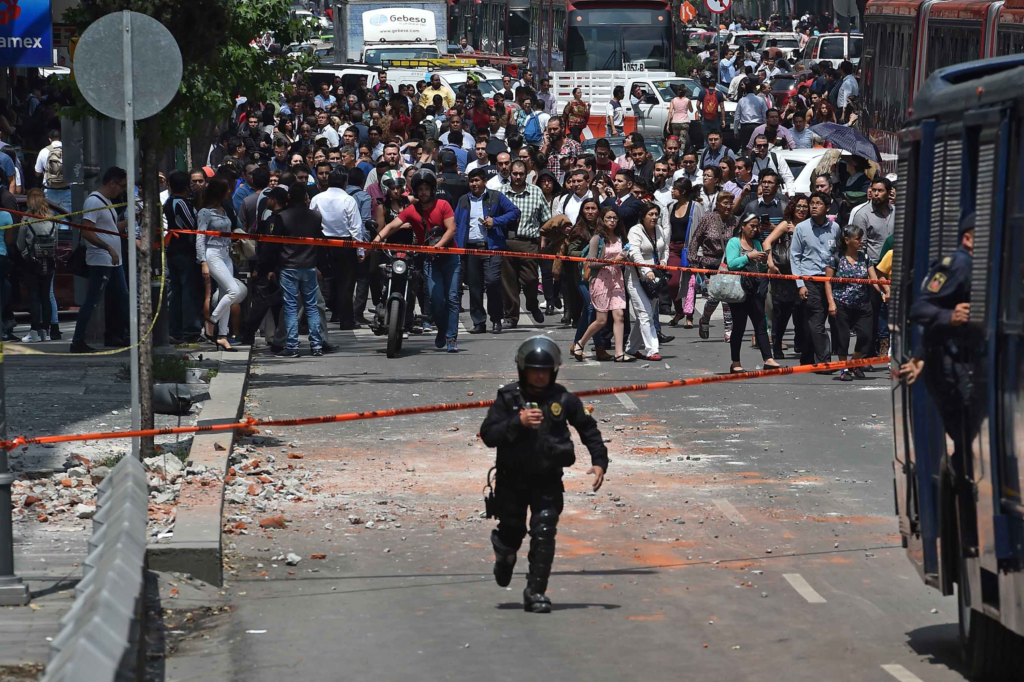
In recent times, the unexpected has become the norm, especially when it comes to natural disasters. Earthquakes, usually associated with tectonic plate boundaries, have made an unexpected appearance in the suburbs of Oklahoma City, raising concerns and prompting a closer look at seismic activities in unusual locations.
Introduction
Earthquakes are geological phenomena caused by the sudden release of energy in the Earth’s crust. While they are commonly associated with areas near tectonic plate boundaries, the occurrence of earthquakes in unexpected locations, such as a suburb of Oklahoma City, raises questions about the underlying factors contributing to such seismic activities.
Understanding Earthquakes
Definition and Causes
At its core, an earthquake is a result of the Earth’s crust experiencing stress and subsequently releasing that stress in the form of seismic waves. This can be triggered by various factors, including tectonic plate movements, volcanic activity, or even human-induced activities such as mining or reservoir-induced seismicity.
Magnitude and Its Impact
The magnitude of an earthquake is a crucial measure of its intensity, with higher magnitudes indicating more powerful seismic events. Understanding the magnitude is essential in assessing the potential impact on the affected area, ranging from minor tremors to catastrophic destruction.
Unusual Locations for Earthquakes
Traditionally, earthquakes have been associated with regions located along tectonic plate boundaries. However, recent seismic events in unexpected places, like the suburbs of Oklahoma City, challenge conventional wisdom. Exploring the reasons behind such occurrences becomes paramount for scientific understanding and community safety.
Earthquakes in Oklahoma City Suburb
Overview of Recent Seismic Activity
The seismic activity in the suburb of Oklahoma City has witnessed a series of earthquakes with a magnitude exceeding 4. These events have triggered concerns among the local population and authorities, prompting a closer examination of the region’s geological dynamics.
Magnitude and Intensity
The magnitude of these earthquakes indicates a significant level of seismic activity. Understanding the intensity is crucial for assessing potential damage to infrastructure, the environment, and the well-being of the local community.
Impact on the Local Community
The impact of earthquakes extends beyond the geological realm; it deeply affects the lives of the people residing in the affected area. From structural damage to psychological stress, the community faces challenges that require prompt and effective responses.
Possible Explanations
Natural Seismic Activity
One possible explanation for earthquakes in unexpected locations is natural seismic activity resulting from localized geological features. Understanding the geological composition of the region is essential in determining the natural factors contributing to seismic events.
Human-Induced Factors
Human activities, such as fracking, mining, or reservoir-induced seismicity, can also contribute to earthquakes. Examining the human-induced factors in the Oklahoma City suburb becomes crucial to comprehensively understand the dynamics at play.
Scientific Studies and Research
In-depth scientific studies and research are essential for unravelling the mysteries behind earthquakes in unconventional locations. Collaborative efforts between geologists, seismologists, and environmental scientists can provide valuable insights into the root causes.
Preparedness Measures
Importance of Earthquake Preparedness
Regardless of the location, earthquake preparedness is paramount. Educating the public about safety measures, creating awareness, and establishing community resilience programs are vital components in minimizing the impact of seismic events.
Tips for Staying Safe During an Earthquake
Simple yet effective tips, such as “Drop, Cover, and Hold On,” can significantly enhance individual and community safety during an earthquake. Educating residents on these measures forms a crucial aspect of disaster preparedness.
Community Response and Support
The way a community responds to earthquakes plays a pivotal role in mitigating the aftermath. Establishing support systems, including emergency response teams and community centers, fosters a sense of unity and preparedness.
Environmental Impact
Effects on Local Infrastructure
The seismic events in the Oklahoma City suburb inevitably leave a mark on local infrastructure. Understanding the effects on buildings, roads, and utilities is vital for both immediate response and long-term recovery efforts.
Long-Term Consequences
Beyond the immediate impact, earthquakes can have lasting consequences on the environment. Addressing long-term effects requires a comprehensive approach, considering ecological restoration, infrastructure rebuilding, and community well-being.
Mitigation Strategies
Implementing effective mitigation strategies involves a combination of technological advancements and community involvement. From earthquake-resistant building designs to sustainable land use practices, a proactive approach can reduce the vulnerability of communities to seismic events.
Public Awareness

Importance of Educating the Public
Raising public awareness about earthquake risks is a fundamental step in building resilient communities. Providing accessible information and conducting awareness campaigns empower individuals to take proactive measures for their safety.
Initiatives for Raising Awareness
Community-based initiatives, schools, and local organizations can play a crucial role in raising awareness about earthquake risks. Collaborative efforts ensure that information reaches a wider audience, fostering a culture of preparedness.
Role of Media in Disseminating Information
Media plays a pivotal role in shaping public perception. Responsible reporting, accurate information dissemination, and avoiding sensationalism are essential for ensuring that the public receives reliable information during seismic events.
Government Response
Local and Federal Government Actions
The response of local and federal governments during and after seismic events is critical. Coordinated efforts in emergency response, relief operations, and infrastructure rehabilitation are essential for effective disaster management.
Emergency Services and Relief Efforts
Emergency services, including search and rescue teams, medical assistance, and relief organizations, play a vital role in the immediate aftermath of earthquakes. Timely and well-coordinated efforts are key to saving lives and minimizing damage.
Future Plans for Earthquake-Prone Areas
Learning from past experiences, governments should formulate robust plans for earthquake-prone areas. This includes zoning regulations, building codes, and infrastructure development that consider seismic risks.
Global Perspective
Comparison with Earthquakes Worldwide
Comparing seismic events in Oklahoma City to earthquakes worldwide provides valuable context. Understanding how other regions cope with and mitigate earthquake risks contributes to a global perspective on disaster management.
Common Misconceptions About Seismic Activity
Dispelling common misconceptions about earthquakes is crucial for informed decision-making. Addressing myths and providing accurate information fosters a better understanding of seismic risks.
International Cooperation on Earthquake Research
Collaboration between countries on earthquake research can lead to global shared knowledge and improved strategies for mitigating seismic risks. International cooperation is vital in the face of natural disasters that transcend borders.
The Human Element
Personal Stories from Affected Individuals
Hearing the personal stories of those affected by earthquakes humanizes the experience. These narratives shed light on the challenges faced by individuals and communities, emphasizing the need for empathy and support.
Psychological Impact on the Community
The psychological toll of earthquakes extends beyond physical damage. Understanding and addressing the mental health challenges faced by the community is an integral part of the recovery process.
Support Systems and Mental Health Services
Establishing support systems and providing mental health services are essential components of post-earthquake recovery. Ensuring access to counselling and support groups helps individuals cope with trauma.
Historical Context
Previous Earthquakes in the Region
Examining the history of earthquakes in the region provides insights into recurring patterns and potential triggers. Learning from past experiences contributes to better-informed decision-making and preparedness.
Evolution of Seismic Patterns
Understanding the evolution of seismic patterns in the area allows for more accurate predictions. This historical context aids in developing proactive measures to mitigate the impact of future seismic events.
Lessons Learned from Past Experiences
Every earthquake event offers valuable lessons. Analyzing the response to past earthquakes helps refine emergency plans and improve overall disaster preparedness.
Media Coverage
Role of Media in Shaping Public Perception
Media coverage can influence public perception and response during seismic events. Responsible reporting, devoid of sensationalism, ensures that accurate information reaches the public, facilitating better-informed decision-making.
Responsible Reporting on Earthquakes
Journalistic responsibility is paramount in reporting on earthquakes. Providing accurate information, citing credible sources, and avoiding speculation contribute to a more informed and resilient community.
Avoiding Sensationalism
While earthquakes capture public attention, sensationalism in media coverage can lead to unnecessary panic. Striking a balance between capturing the gravity of the situation and avoiding undue alarm is essential.
Expert Opinions
Insights from Geologists and Seismologists
Seeking insights from experts in the field, such as geologists and seismologists, adds depth to the understanding of earthquakes. Their analyses, predictions, and recommendations contribute to informed decision-making.
Interviews with Earthquake Experts
Conducting interviews with earthquake experts provides a platform for expert opinions and clarifications. Addressing common misconceptions and providing accessible information enhances public understanding.
Scientific Explanations and Predictions
Communicating scientific explanations and predictions clearly and understandably bridges the gap between experts and the general public. Transparency in conveying complex information fosters trust and cooperation.
Future Trends
Predictions for Seismic Activity in the Area
Based on ongoing research and analysis, making predictions for future seismic activity in the Oklahoma City suburb helps in proactive planning and preparedness.
Advances in Earthquake Detection Technology
Technological advancements in earthquake detection play a pivotal role in early warning systems. Keeping abreast of the latest innovations contributes to more effective disaster response.
Precautionary Measures for the Future
Drawing on lessons learned, implementing precautionary measures for the future involves a combination of policy changes, community engagement, and technological advancements.
Conclusion
In conclusion, the occurrence of earthquakes over magnitude 4 in an Oklahoma City suburb underscores the dynamic nature of our planet. Understanding the causes, impact, and response to seismic events in unexpected locations is crucial for building resilient communities worldwide. By combining scientific research, community education, and responsible media coverage, we can enhance our collective ability to face the challenges posed by earthquakes.
FAQs
- Are earthquakes in unexpected locations becoming more common?
- Earthquakes in unexpected locations are gaining attention, but whether they increase in frequency requires further scientific analysis.
- How can individuals prepare for earthquakes in non-traditional seismic zones?
- Individuals can prepare by educating themselves on earthquake safety measures, securing heavy furniture, and having emergency kits ready.
- What role does human activity play in causing earthquakes in unusual locations?
- Human activities like fracking and mining can induce seismicity, contributing to earthquakes in non-tectonic areas.
- How can the media contribute to responsible reporting during seismic events?
- The media can contribute by avoiding sensationalism, verifying information from reliable sources, and providing context in their reporting.
- What long-term measures can governments take to mitigate seismic risks in vulnerable areas?
- Governments can implement strict building codes, invest in early warning systems, and conduct regular geological assessments for effective mitigation.



